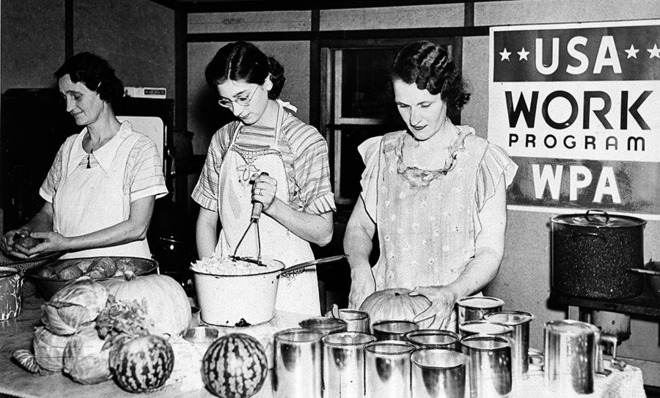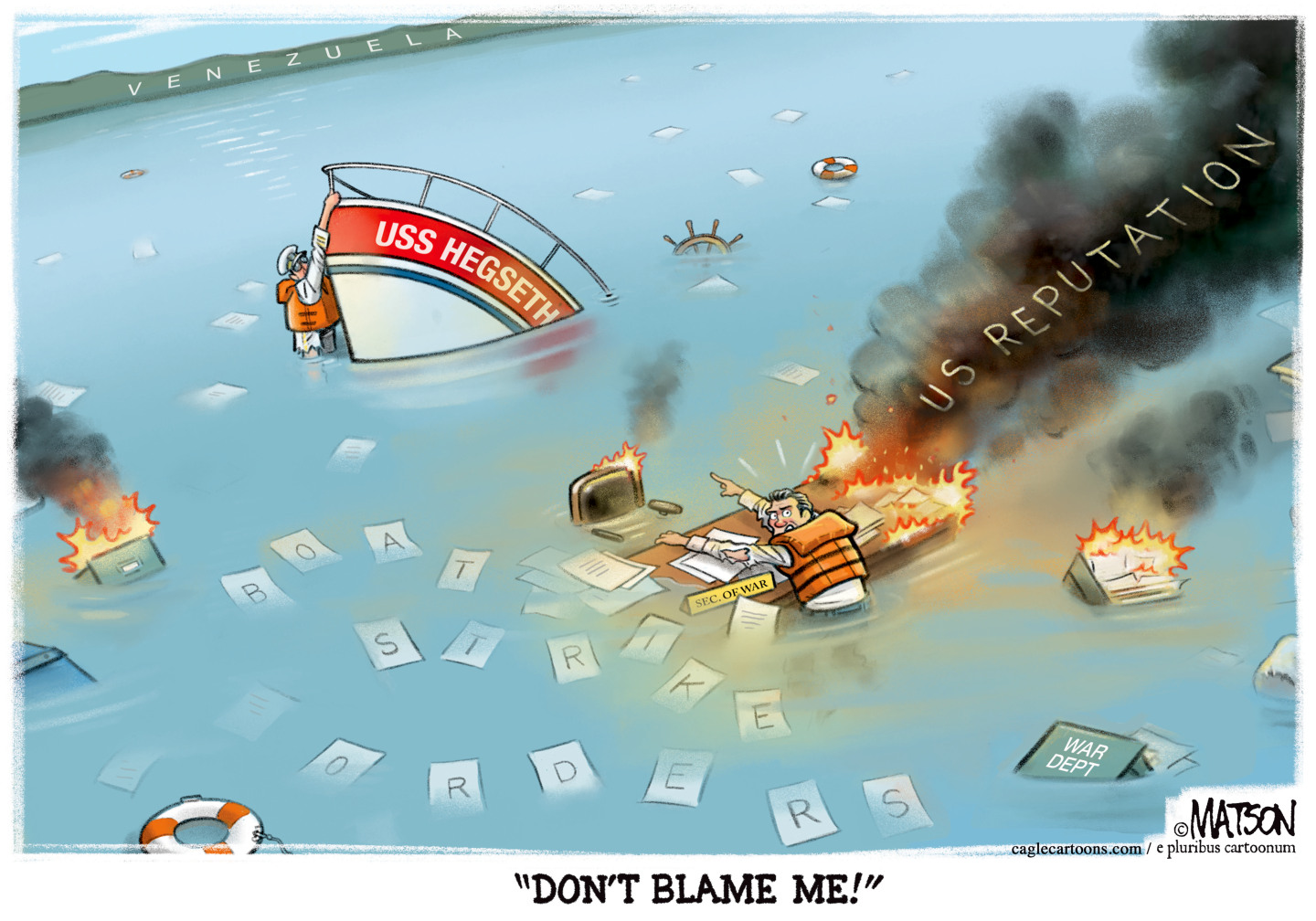Hey, liberals: Stop kowtowing to the almighty market
What New Deal revisionism tells us about neo-liberalism


Was the New Deal actually market-friendly, maybe even something Reagan would have done? New York's Jonathan Chait suggests so, in a revisionist account of President Franklin D. Roosevelt's signature array of depression-fighting policies.
It's actually a wonder it's taken so long for market-loving neoliberals to make the point. For two generations, neoliberals (and now their monstrous offspring, austerians) have been telling the nation that we cannot risk disrupting the sainted market, that all social policy must be mediated through market mechanisms, and that all direct economic controls are bound to fail. Long held as one of big government's shining moments, the New Deal was an invaluable counterpoint to such nonsense. Now, Chait says, the most successful parts of it were actually neoliberal all along.
Here's the problem: The point is basically garbage.
The Week
Escape your echo chamber. Get the facts behind the news, plus analysis from multiple perspectives.

Sign up for The Week's Free Newsletters
From our morning news briefing to a weekly Good News Newsletter, get the best of The Week delivered directly to your inbox.
From our morning news briefing to a weekly Good News Newsletter, get the best of The Week delivered directly to your inbox.
First, have a look at Chait's provocative statement, which he drops in an aside about farm subsidies:
The planning fad manifested itself in such disasters as the National Recovery Act, a quasi-fascistic price-fixing scheme that failed, was struck down by the Supreme Court, and fortunately abandoned as a policy model in favor of more effective, market-friendly remedies for the excesses of the free market. [New York]
Let's unpack this one step at a time. First, there was no such New Deal law. Presumably Chait is referring to the National Industrial Recovery Act (NIRA), which was among the more controversial and less successful parts of the New Deal program. But it was not a total failure, and the parts that failed did not fail in the way that Chait describes.
The New Deal was a hodgepodge of policies hastily slapped together before and after President Franklin D. Roosevelt took office in the midst of the Great Depression. Especially in the early days, it was sometimes ill-advised and even contradictory. The NIRA was emblematic of this early spirit of reckless experimentation. It had two main sections: the first, a poorly thought-out experiment in economic planning, to be supervised by a new National Recovery Administration; the second, a straightforwardly Keynesian program of infrastructure spending to be carried out by a new Public Works Administration.
The latter has been largely forgotten next to the memory of the similar Works Progress Administration, the biggest and most important New Deal agency, which directly employed over three million people to construct public infrastructure. The Public Works Administration, more conservative in structure, hired private contractors to do much the same thing. Nevertheless it was a huge success, spending over $6 billion total (or about a tenth of a year's GDP at the time — something like $1.5 trillion today), putting thousands to work building schools, hospitals, and major projects across the country, including many still in use today, like the Lincoln Tunnel in New York and the Grand Coulee Dam in Washington.
A free daily email with the biggest news stories of the day – and the best features from TheWeek.com
The National Recovery Administration was basically a fiasco, though. Its purpose was to stop deflation and to eliminate "over-competition" in industry, and so it undertook a program of price controls and centralization of industry and labor. The first part was meant to attack deflation — wherein the price of consumer goods fall, dropping wages too in a downward spiral — by putting floors on wages and all manner of goods. But it was not executed properly and deflation was ultimately fixed by another pricing control scheme (see below). The second idea, though, was straight bonkers. The National Recovery Administration mainly became known for endorsing monopoly as government policy, and spewing out pointless regulations by the truckload.
But it had one more important effect, one that actually encouraged liberal reforms.
Since the National Recovery Administration was supposed to strengthen capital and labor, it forced sweeping pro-union language, passed with enormous political effort, into NIRA. It led directly to a gigantic surge in union militancy and organizing. The statute authorizing the National Recovery Administration had already expired by the time the Supreme Court declared most of its key provisions unconstitutional, but the pro-labor sections were quickly resurrected in the National Labor Relations Act. Thus, the NIRA was a key step in the explosive growth of unions in the 1930s-40s, the strength of which underpinned the widely shared gains of the postwar boom.
To what extent the National Recovery Administration was "quasi-fascistic" is unclear. What it was above all was dumb and incoherent. Fascist economic policy, remember, was very real at the time, and it stood for full employment and a kind of corporatism. But it definitely did not bother with labor rights (Hitler banned trade unions along with political parties).
Finally, there's Chait's characterization that the effective parts of the New Deal were more "market friendly," as opposed to wacky fascist price-fixing schemes. This is also false.
Probably the most successful of all Roosevelt's economic policies was his (highly legally questionable) move to use the WWI-era Trading With the Enemy Act to confiscate all the monetary gold in the country at $20.67 per ounce. He then spent the next few months personally fiddling the price upward:
Every morning at nine o'clock, Morgenthau; Jesse Jones, the head of the RFC; and George Warren would meet with the president over his breakfast of soft-boiled eggs, to determine the price of gold for that day. They began at $31.26 an ounce. The next morning this increased to $31.54, then $31.76 and $31.82. No one had a clue how they went about setting the price, although everyone presumed that some subtle analyses of the world bullion and foreign exchange markets went into their calculations. In fact, the choice of price was completely random. All they were trying to do was push the price a little higher than the day before. [The Lords of Finance]
Eventually Roosevelt fixed the price at $35 and left it there, effectively sharply devaluing the dollar over the howling objections of the day's economic orthodoxy. Needless to say, there are probably better ways to make economic policy than the president fixing the most important price in the economy over his breakfast. But it worked, halting deflation and getting recovery started. Price controls (and rationing) also were a critical wartime policy, as John Kenneth Galbraith can tell you.
The truth is that price controls, like direct government provision of jobs and services, are sometimes good and sometimes bad. Policy design and context always matter. But trying to award the successes of the New Deal to the market is not only lousy history, but indicative of increasingly outdated trends in lefty thought. It's time for liberals to stop instinctively kowtowing to the almighty market. We've gone down that path and the result is this chart.
Ryan Cooper is a national correspondent at TheWeek.com. His work has appeared in the Washington Monthly, The New Republic, and the Washington Post.
-
 5 criminally underrated cartoons about Pete Hegseth’s war crime
5 criminally underrated cartoons about Pete Hegseth’s war crimeCartoon Artists take on USS Hegseth, rats leaving the sinking ship, and more
-
 Can Mike Johnson keep his job?
Can Mike Johnson keep his job?Today's Big Question GOP women come after the House leader
-
 A postapocalyptic trip to Sin City, a peek inside Taylor Swift’s “Eras” tour, and an explicit hockey romance in December TV
A postapocalyptic trip to Sin City, a peek inside Taylor Swift’s “Eras” tour, and an explicit hockey romance in December TVthe week recommends This month’s new television releases include ‘Fallout,’ ‘Taylor Swift: The End Of An Era’ and ‘Heated Rivalry’
-
 Has Zohran Mamdani shown the Democrats how to win again?
Has Zohran Mamdani shown the Democrats how to win again?Today’s Big Question New York City mayoral election touted as victory for left-wing populists but moderate centrist wins elsewhere present more complex path for Democratic Party
-
 Millions turn out for anti-Trump ‘No Kings’ rallies
Millions turn out for anti-Trump ‘No Kings’ ralliesSpeed Read An estimated 7 million people participated, 2 million more than at the first ‘No Kings’ protest in June
-
 Ghislaine Maxwell: angling for a Trump pardon
Ghislaine Maxwell: angling for a Trump pardonTalking Point Convicted sex trafficker's testimony could shed new light on president's links to Jeffrey Epstein
-
 The last words and final moments of 40 presidents
The last words and final moments of 40 presidentsThe Explainer Some are eloquent quotes worthy of the holders of the highest office in the nation, and others... aren't
-
 The JFK files: the truth at last?
The JFK files: the truth at last?In The Spotlight More than 64,000 previously classified documents relating the 1963 assassination of John F. Kennedy have been released by the Trump administration
-
 'Seriously, not literally': how should the world take Donald Trump?
'Seriously, not literally': how should the world take Donald Trump?Today's big question White House rhetoric and reality look likely to become increasingly blurred
-
 Will Trump's 'madman' strategy pay off?
Will Trump's 'madman' strategy pay off?Today's Big Question Incoming US president likes to seem unpredictable but, this time round, world leaders could be wise to his playbook
-
 Democrats vs. Republicans: who are US billionaires backing?
Democrats vs. Republicans: who are US billionaires backing?The Explainer Younger tech titans join 'boys' club throwing money and support' behind President Trump, while older plutocrats quietly rebuke new administration
